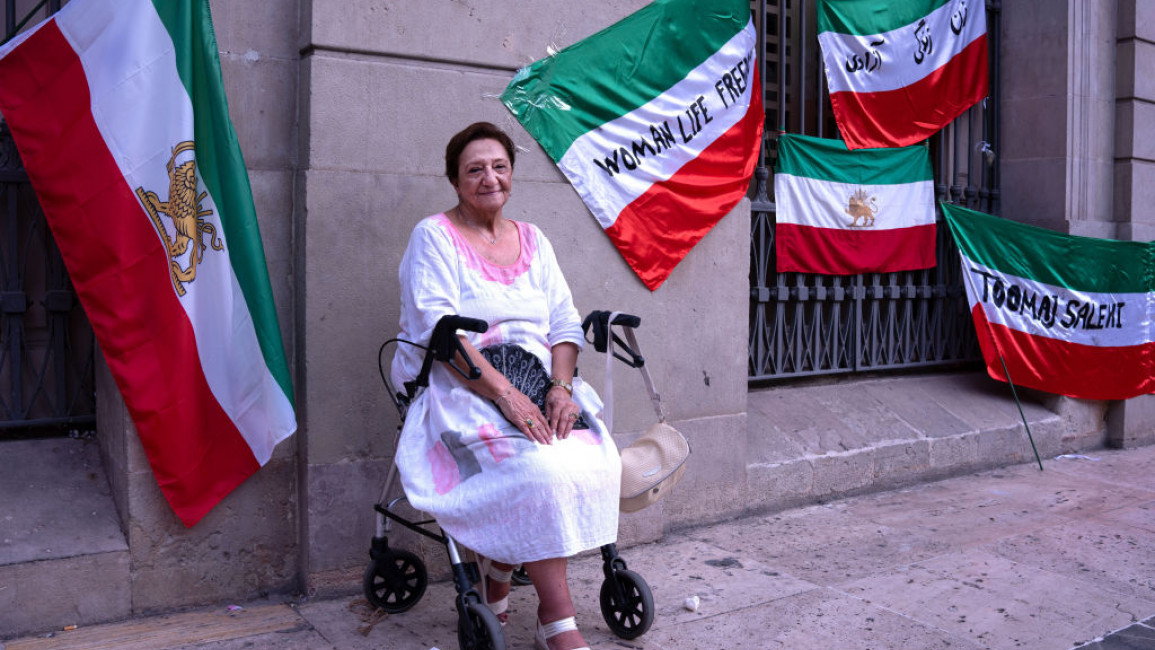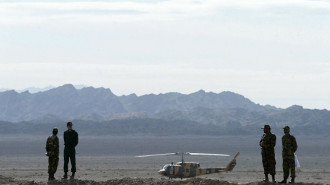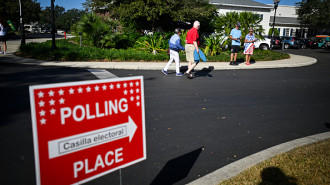A year since Mahsa Amini, deaths in Iranian custody continues
A year after the death of Mahsa Amini while in the custody of Iran's Islamic morality police, known locally as Gasht-e Ershad, not only have her perpetrators escaped justice, but similar mistreatment of prisoners and detainees in Iran continues and results in more tragic deaths.
The most recent incident of this kind occurred on 31 August when Javad Rouhi, who had been transferred from Nowshahr prison to a hospital, died there. The Norway-based Iran Human Rights said he was tortured during arrest and died "under suspicious circumstances."
The grim incidents of Amini and Rouhi deaths are far from isolated cases in Iran. In a 2021 report, Amnesty International documented at least 72 deaths in custody in Iran between 2010 and 2021.
Moreover, a report published by the Follow-Up Committee on Detainees' Fate, a group of independent Iranian activists, revealed that at least 16 men were killed in police stations and security forces' detention centres after Amini's death last September.
None of those cases had the profound impact on Iranian society that Amini's death had, sparking widespread protests. However, some of these incidents, like the death of Sattar Beheshti, featured determined mothers fighting for justice, and others, such as the case of Zahra Kazemi, had significant repercussions for Iran-Canada bilateral relations.
Mahsa Amini
On 16 September 2022, just five days before her 22nd birthday, Mahsa Amini died in Tehran's Kasra Hospital. Her unconscious body had been transferred there on 13 September from the infamous Vozara detention centre, under the control of Iran's Islamic Morality Police, known locally as Gasht-e Ershad.
Amini, from the Kurdish city of Saqqez, had been visiting her brother in Tehran when her arrest occurred outside a metro station in the Iranian capital. Like thousands of Iranian women arrested daily for not following the Islamic dress code, Amini faced detention, but her fate took a unique turn.
Since the Islamist regime took hold in Iran after the 1979 revolution, enforcing strict hijab laws for women has been a central agenda. Gasht-e Ershad patrols were tasked with apprehending women disobeying the law and compelling them to sign a document promising they would not defy the hijab law again.
Over the past two decades, thousands of women went through this process and reunited with their families after brief detention in temporary custody centres. Yet, for Amini's family, all they received was their young girl's lifeless body.
Her death triggered nationwide anti-establishment protests. In response, the authorities acted swiftly and harshly, resulting in the deaths of at least 530 protesters and the detention of over 22,000 others.
To date, there has been no word on the court proceedings against Gasht-e Ershad, and no arrests of those potentially responsible for Amini's death have been carried out.
Zahra Kazemi
Zahra Kazemi, an Iranian-Canadian photojournalist, was 55 years old when she passed away on 11 July 2003. Kazemi, who held an official press permit from Tehran police, was arrested while covering a sit-in by the family members of detained student activists in front of the Evin prison on 23 June. The circumstances surrounding the aftermath of her arrest remained unclear. Still, it is well-documented that the then-general prosecutor of Tehran, Saeed Mortazavi, was present during her interrogation immediately after the arrest.
Less than 72 hours after her arrest, Kazemi was rushed to a hospital, slipping into a coma and dying of her injuries 13 days later.
Iran's Legal Medicine Organization attributed her cause of death to a "blow to the head from a hard object or a hard object striking the head." Nevertheless, Mortazavi's office accused Kazemi of espionage and insisted she died of a stroke. In a trial of Evin prison officials, no one was held accountable, and Mortazavi, known among journalists as the Press Headsman, continued his ascent within Iran's judiciary system.
Sattar Behshti
On 28 October 2012, Sattar Beheshti, a 35-year-old blogger and labourer, wrote his final Facebook post, revealing threats from intelligence agents who warned him: "Tell your mother that soon she will have to wear the mourning black dress because you can't keep your big mouth shut."
The next day, Iran's Police for the Sphere of the Production and Exchange of Information, locally known as FATA, arrested him on charges of "plotting against national security through activities on social media and Facebook." He was arrested in Robat Karim, an impoverished satellite city of Tehran, and on 30 October, he was registered in Ward 350 of Evin prison. However, he was admitted to the prison's health clinic before that.
A day later, he wrote a formal complaint against his interrogator, alleging severe torture. On that same day, he was moved to an undisclosed location, and two days afterwards, Iran's judiciary announced his death. Authorities claimed it was due to "shock", but a leaked report indicated he died from torture and severe blows to his testicles.
Beheshti's mother, Gohar Eshghi, donned a black dress to mourn her only son's death. She emerged as a prominent dissident figure and symbolised an unwavering pursuit of justice.
Kahrizak centre
Before the 2009 protests against the reelection of hardliner President Mahmoud Ahmadinejad in a rigged election, the name Kahrizak in Iran was merely associated with an elderly care facility in a small town of the same name in southern Tehran. However, when the authorities initiated a brutal crackdown on the Green Movement protests, Kahrizak became synonymous with horror, where at least three young men met their end through torture.
Mohsen Rouholamini, 25, Mohammad Kamrani, 18, and Amir Javadifar, 25, were the three protesters who did not survive the brutal conditions at Kahrizak detention centre. Their bodies bore signs of severe wounds and injuries when their dead bodies were handed to their relatives.
Rouholamini died on a prison bus while being transferred from Kahrizak to the Evin prison. Javadifar lost his life inside Kahrizak, while Kamrani died in a hospital after being transferred from Kahrizak due to his deteriorating health.
When news of these deaths at Kahrizak came to light, the detention centre was shut down, but the tragic incidents linked to it continued. Ramin Pourandarjani, 26, a doctor who served at the detention centre and had confirmed in a medical report that Rouholamini was tortured in Kahrizak, was arrested in November 2009 and died in police custody.
Despite widespread international criticism for the events at Kahrizak and the deaths of other well-known prisoners, Iran's leadership has persisted with its harsh approach towards inmates and dissidents.
On the anniversary of Amini's death in custody and the subsequent uprising, Amnesty International released a report that laid bare the lack of accountability for those responsible for prisoner deaths, torture, and protestor executions, as well as the brutal crackdown on anti-establishment demonstrations.
"The authorities have refused to conduct any thorough, independent and impartial investigations into the human rights violations committed during and in the aftermath of the "Woman Life Freedom" uprising … Instead, authorities have applauded the security forces for suppressing the unrest and shielded officials from accountability," said Amnesty International.

![Palestinians mourned the victims of an Israeli strike on Deir al-Balah [Getty]](/sites/default/files/styles/image_684x385/public/2024-11/GettyImages-2182362043.jpg?h=199d8c1f&itok=xSHZFbmc)


![The law could be enforced against teachers without prior notice [Getty]](/sites/default/files/styles/image_684x385/public/2178740715.jpeg?h=a5f2f23a&itok=hnqrCS4x)
 Follow the Middle East's top stories in English at The New Arab on Google News
Follow the Middle East's top stories in English at The New Arab on Google News
![Fakhrizadeh [AFP] Fakhrizadeh [AFP]](/sites/default/files/styles/image_330x185/public/media/images/774C39F7-8F7A-4D67-B998-27D102FCB4A7.png?h=d1cb525d&itok=j9eGvunV)

